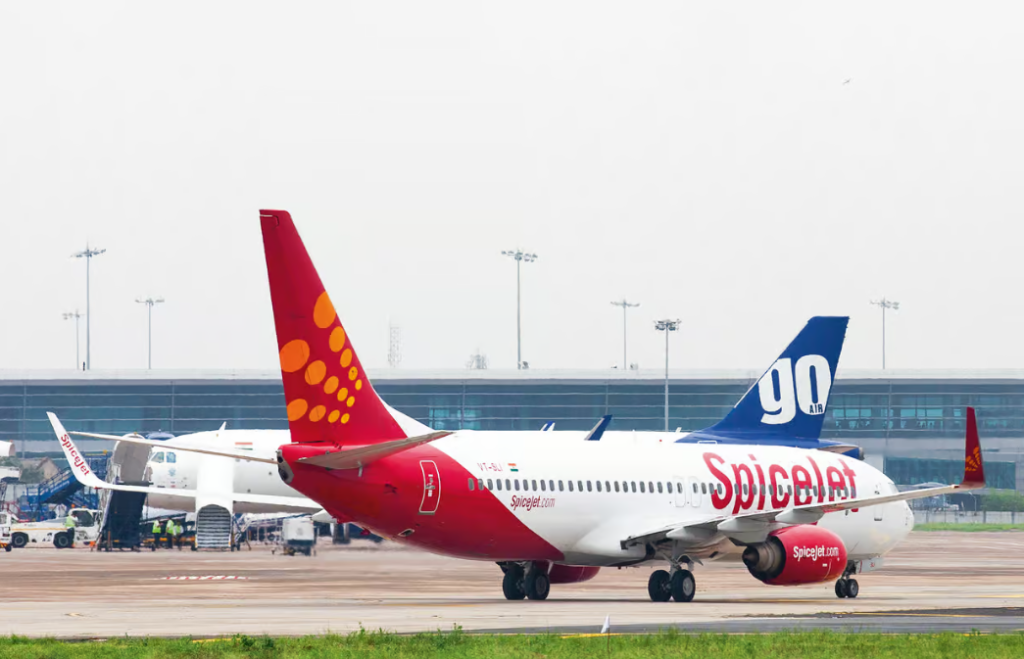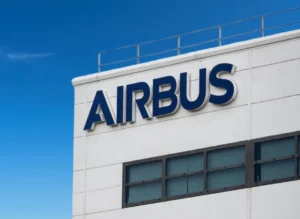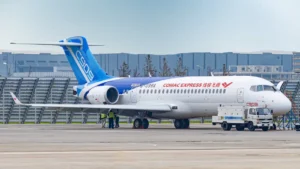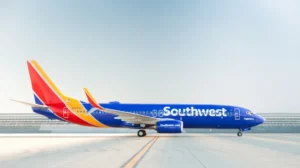Boeing Crisis: India’s Opportunity to Soar in Aircraft Manufacturing Amid Rising Demand
Boeing’s recent challenges create a significant opportunity for India to enter the large aircraft manufacturing industry. This move would not only support India’s own growth trajectory but also provide a non-Chinese alternative for global aircraft supply. India’s ambitions should extend beyond its current collaboration with Embraer, the Brazilian manufacturer of regional airliners, to include the production of large commercial passenger aircraft. This step is crucial for India’s economic growth and for diversifying the sources of aircraft manufacturing on a global scale.

Photo Source: https://www.fortuneindia.com/
Rising Demand and Global Duopoly
In 2023, Boeing projected that the global market would require an additional 42,600 commercial jets over the next two decades, with a substantial portion of this demand coming from Asia. Currently, Boeing and Airbus dominate the market for large passenger aircraft, but this duopoly has shown inefficiencies. Delivery times for new orders are lengthening due to surging demand from rapidly growing economies such as China and India, as well as increasing air travel in wealthier countries. Boeing’s ongoing quality control issues highlight the difficulties even established manufacturers face when trying to scale production quickly while maintaining high standards.
Boeing’s Troubles
Boeing’s issues began with the tragic crashes of its 737 Max aircraft in 2018 and 2019, which resulted in 349 fatalities and led to the prolonged grounding of these planes. The company has continued to struggle, culminating in the recent departures of three top executives, including the CEO. These leadership changes alone are unlikely to resolve Boeing’s quality control problems, which are critical in the high-stakes business of manufacturing large passenger planes.
Alternatives from China and Russia
China’s entry into the aircraft manufacturing market with the C919 has been marred by allegations of intellectual property theft, making Western airlines hesitant to place orders. Additionally, the C919 relies heavily on Western parts, complicating its appeal. Russia’s United Aircraft Corporation (UAC) has also made strides with the MC21, a competitor to the Boeing 737 and Airbus A320. However, Western sanctions following Russia’s invasion of Ukraine have hindered UAC’s progress, particularly due to the unavailability of Pratt & Whitney engines and delays in developing domestic alternatives.
India’s Potential in Aircraft Manufacturing
India is strategically positioned as a partner to the West in ensuring a peaceful rise of China. With collaborative ventures spanning both civilian and defense sectors, such as the BrahMos missile project with Russia, India has demonstrated its capability to develop advanced technologies. A new aircraft manufacturing venture in India, leveraging expertise from its institutions, Russia, and willing Western collaborators, would serve the collective interests of many nations.
Skeptics may point out that both Russia and China took over a decade to develop their aircraft prototypes. However, India could potentially halve this timeline due to three key factors:
- Advancements in Technology: Significant improvements in computing power and artificial intelligence since 2007/08 enable faster and more accurate modeling of aircraft components and their integration.
- Skilled Manpower: India boasts a large pool of skilled professionals and could also draw on the Indian diaspora working in advanced technological fields globally.
- Strategic Interests: Both Western countries and Russia have a vested interest in preventing China from monopolizing the lucrative commercial aircraft market, making them likely to support a joint venture in India.
A Call to Action
India must seize this opportunity by thinking big, identifying key personnel, leveraging diplomatic channels, and initiating collaborative efforts. With the right vision and partnerships, India can establish itself as a major player in the global aircraft manufacturing industry, meeting rising demand and providing a crucial alternative to the current duopoly.
In conclusion, Boeing’s crisis is a clarion call for India to step into the aircraft manufacturing arena. By doing so, India can foster its own growth, support global aviation needs, and offer a new competitive dynamic in the market.









